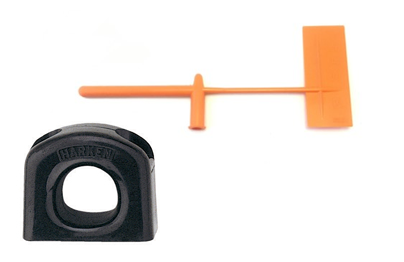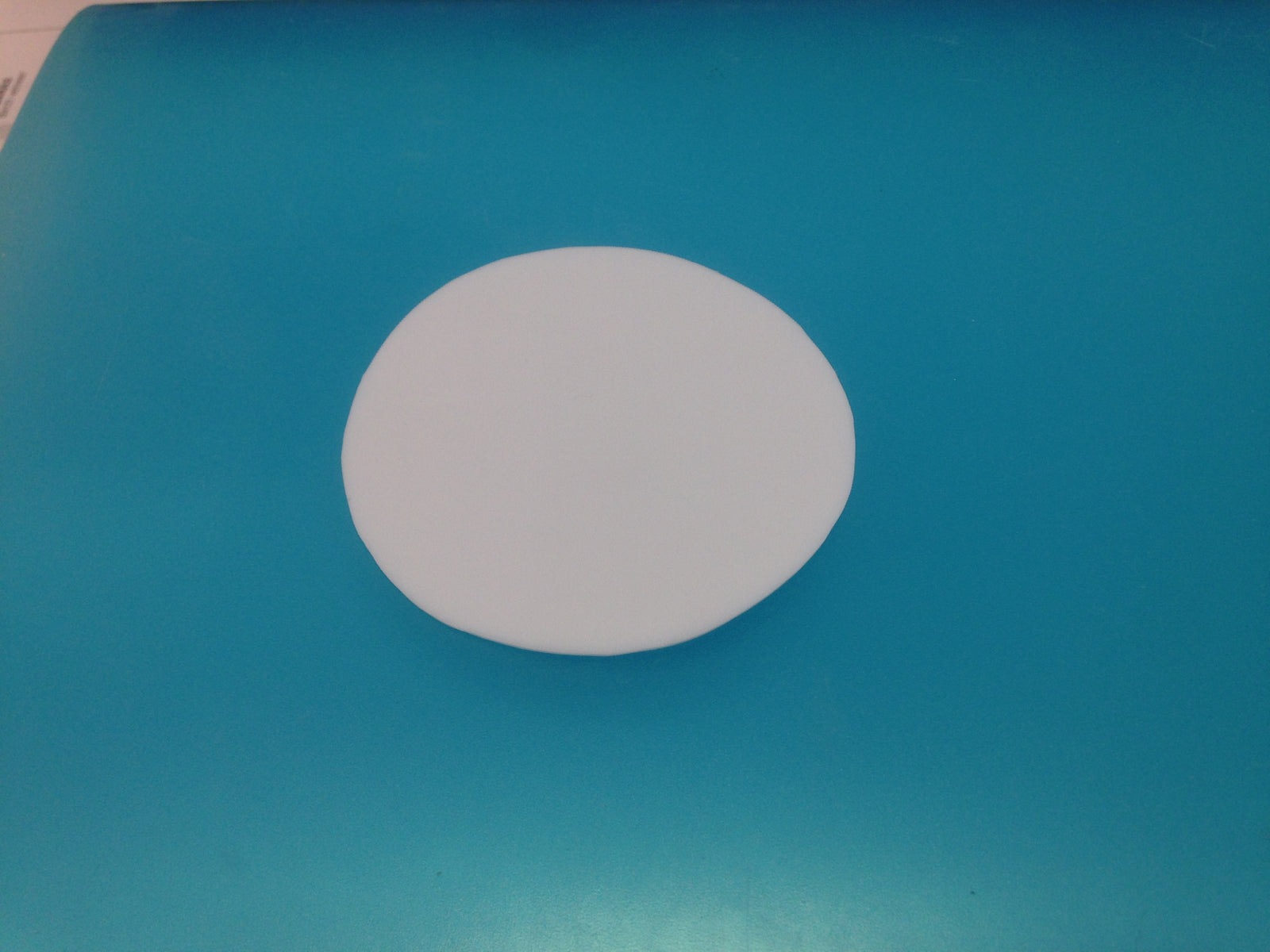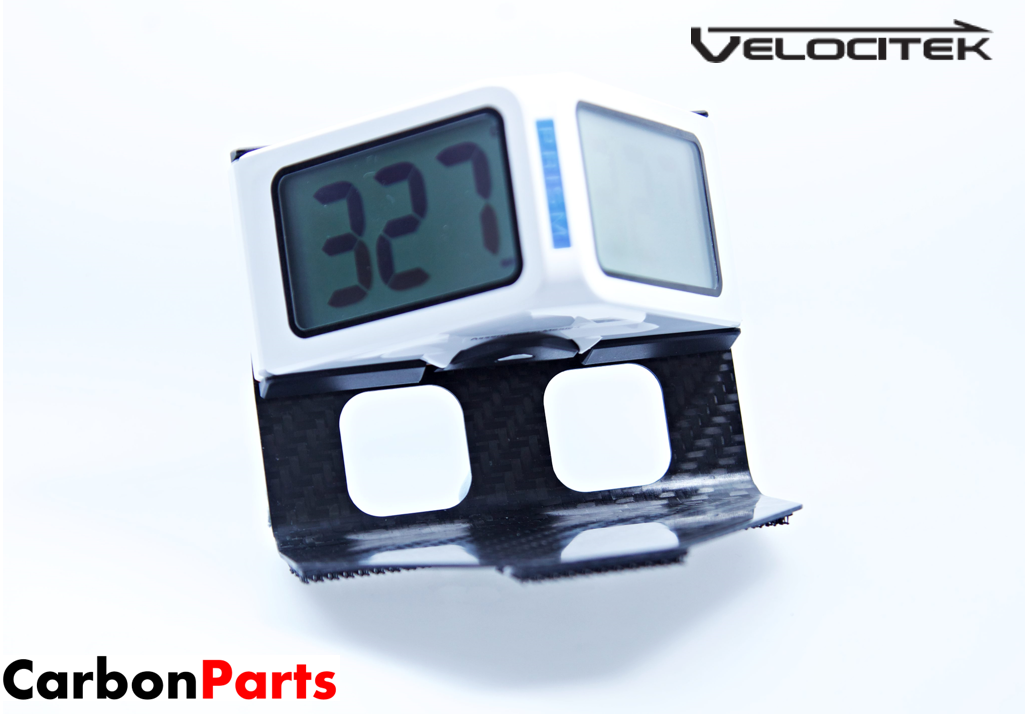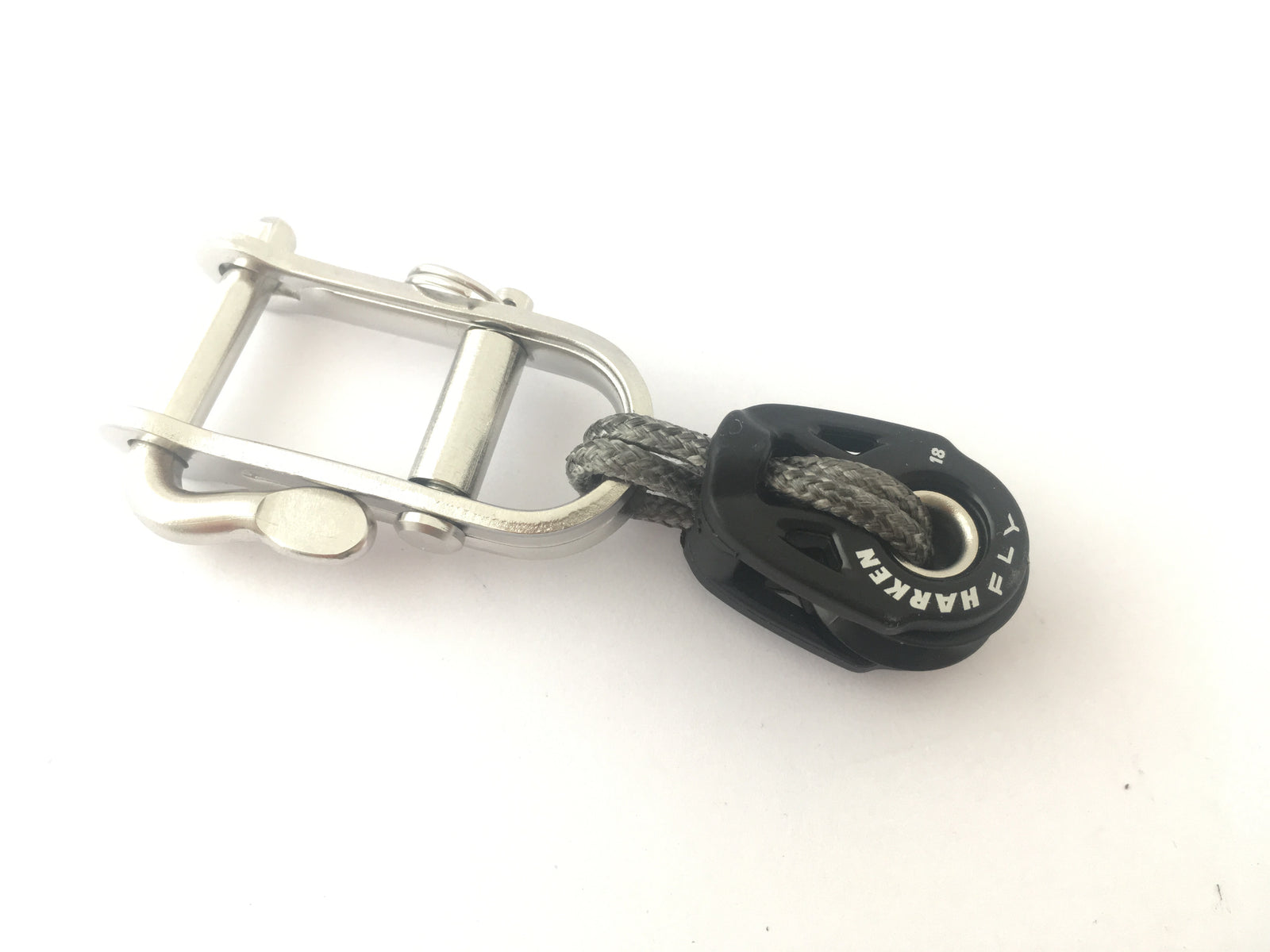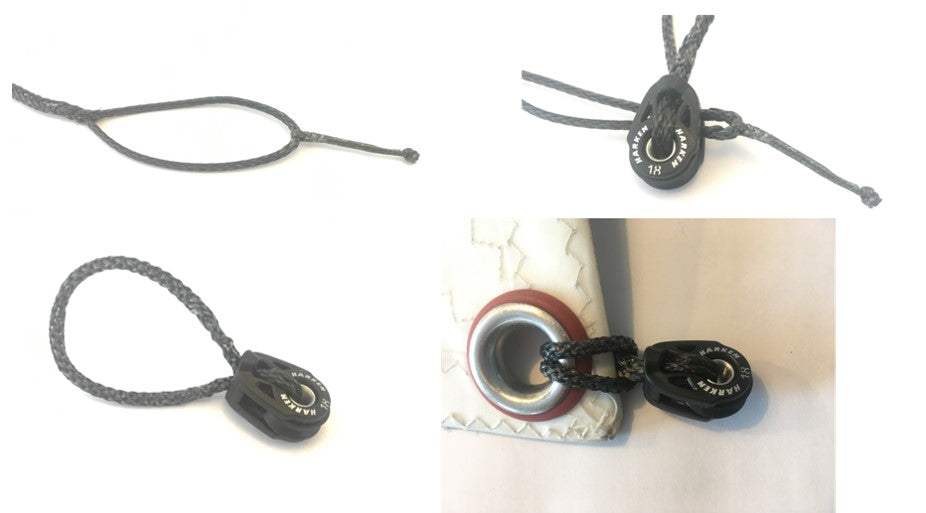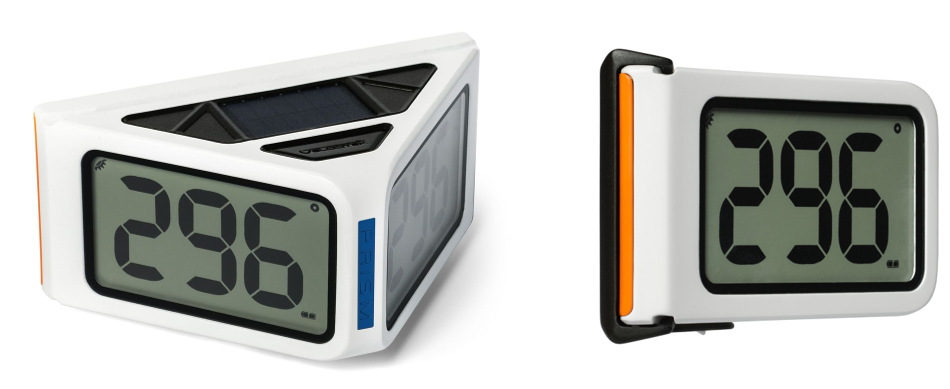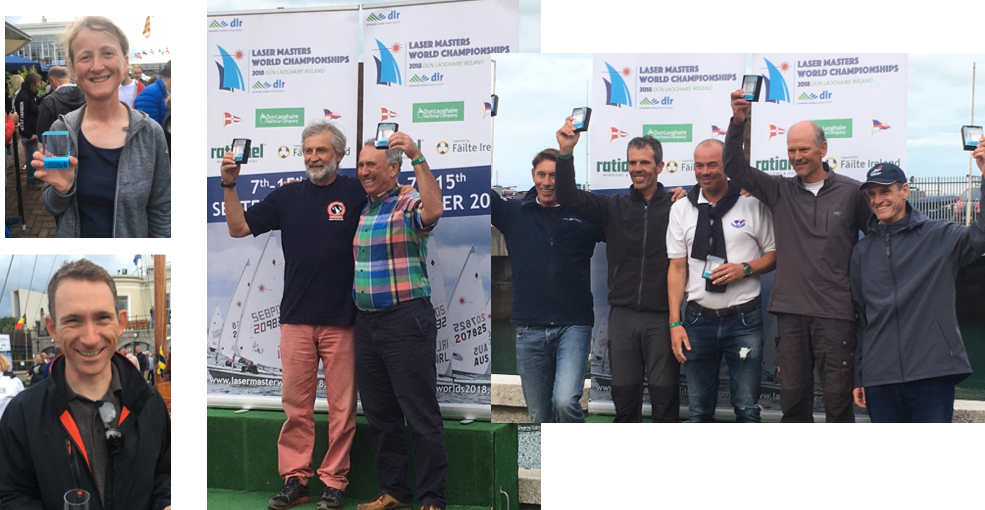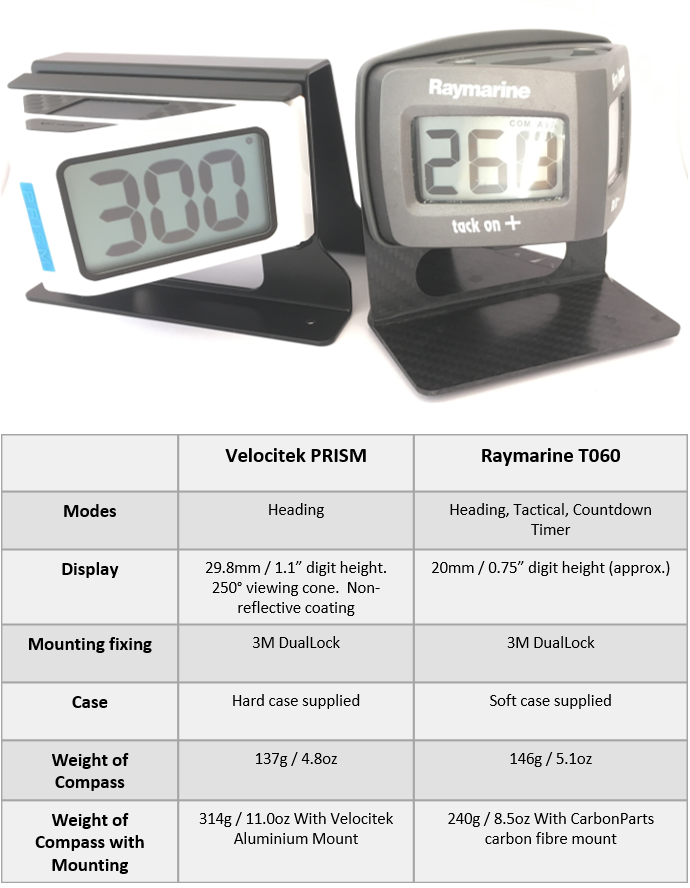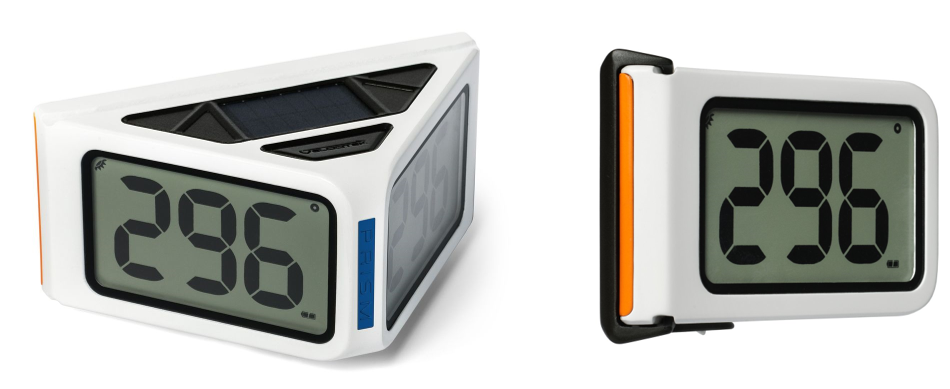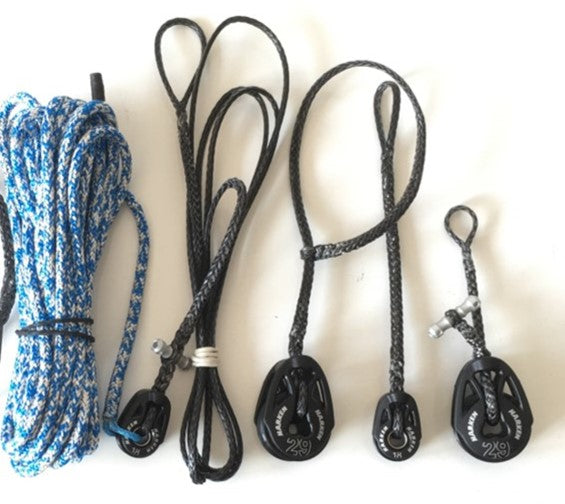We have added a few new products to our website – the kind of things that need replacing on your Laser occasionally – Gudgeons, centreboard brake, Little Hawk Mk2 and spare vanes, and the small black eye on your Harken kicker that can get worn…..
News
We have just added the PROtect tapes wear protection disk to our ever increasing range of parts for your Laser
- November 29, 2018
- 1 min read
The Velocitek PRISM compass is now available with the new CarbonParts deck mounting – in stock for immediate shipping. Treat yourself (or your boat!)….
- November 29, 2018
- 1 min read
By popular request we have broadened our range by adding a ‘lever action’ type Ronstan captive shackle to our range of clew blocks. The lever is maybe a bit easier to use – particularly in colder weather!
Have a look at our wide range of Clew Blocks
- November 13, 2018
- 1 min read
Many customers have asked us why we didn’t sell a Harken 18mm version of our popular Ronstan 20mm spliced clew block. The reason was that the opening on the Harken 18mm is much smaller and threading the boom end primary line loop through the Harken 18mm opening was very difficult. We have just added this neat ‘teaser line’ option, and a Harken 18mm spliced clew block – the teaser line helps you use to pull the loop through the Harken 18mm block with ease!
- October 16, 2018
- 1 min read
Last month, for the first time in 5 years of sailing a Laser for the British Sailing Team I used a compass. In that time, I have gone from not being able to qualify for the World Championships, to coming 10th. I have gone from having very little understanding of sailing strategy and tactics, to having an understanding good enough to usually ‘get it right’, and when I don’t I usually know why. That said, I have sometimes struggled to make the right decision in a race without a compass, so it was time to fill in the blanks. During the years I’ve spent learning to race with and without a compass, here’s my idea of what a compass might do for your sailing.
The compass I am using is a Velocitek Prism. It’s incredibly aesthetic and wouldn’t look out of place on a new Tesla model. The flush display is easily visible from every conceivable position in a Laser.
To begin with it wasn’t immediately obvious what the numbers were telling me, which way was a lift or a header? I found the easiest way to think about it was to know the wind direction and/or course axis bearing, for example 180° – a south wind. Whilst sailing close hauled, numbers moving nearer 180° were favourable lifts, and away from 180° were headers.
Basic understanding over, I began to calibrate what my sailing ‘instincts’ were saying with what the compass was telling me. A small ‘knock’ or ‘header’ that would cause me to bear away slightly but not tack was 3° – 5°. A big shift, the type you can’t ignore and usually come on an offshore day, was around 20°. The first thing I would do going on the water would be to go close hauled on each tack, to establish my numbers on port and starboard. Continuing with the example of a wind direction of 180° (in the northern hemisphere), this would make starboard around 145° and port around 215° but obviously this depends on sea state and wind strength.
Once I have my first numbers for each tack, I need to build a picture for those conditions, as soon as possible. Fundamentally I need to know what a left and a right shift might look like which depends very much on the breeze that day. If I’m sailing in an offshore breeze close to the land, with large shifts, a lift on each tack might be 165° (right shift) and 195° (left shift) on starboard and port respectively, with the wind only taking a few minutes to go between those extremes. In an onshore sea breeze, the range might be as little as 10° and take as long as 15 minutes to swing through the range.
This information is essential, as it allows me to trust which tack to be on. For example, if I realise I’m sailing on starboard at 125° (a 20° header), and in the time I’ve been on the water that’s the furthest left I have seen the wind go, I must immediately tack onto port, if necessary sit in a bad lane or duck boats to do it, tacking becomes a high priority. It is then highly likely in a few minutes the wind will be shifting back to the right, by which time I want to be to the right of as many as boats as possible. On a windy day I would consider sailing a lower mode, bow down, particularly in the first half of a beat (when there is a greater chance and time for the wind to shift back).
It sounds obvious to say, but compasses can’t and won’t tell me where the pressure (gusts) are. Particularly on offshore days, pressure will play as bigger role in my success as the shifts. On a windy day the pressure will still determine where the lifts are, and in light winds I need the pressure for the shifts it will bring as well as the gain in boat speed. On the days where the pressure differences (gust to lull difference) is small, possibly in a sea breeze, sailing lifted numbers is your best bet. There are also those irritating days where strong gusts are travelling over the water but are very hard to spot, often sunny days over green-ish water in my experience, good luck with those.
Returning to the offshore example with visible gusts rolling down the course, I always imagine the wind is coming ‘from’ the gust. The faster moving air which creates the gust drops down from a height, hits the water and fans out (this is the cat’s paw analogy). To get to the gust, providing it falls easily within the laylines of the course, I will sail whichever tack gets me to the gust most quickly, this means when I get to the pressure it is almost invariably a header. I may choose to sail for another 30 seconds before tacking, keeping an eye on my compass to see how much the wind is heading. Once I tack I should be in good pressure on a lifted tack. From there, I may choose to sail a lower mode if the gust is small, or, continue sailing a VMG/high mode if the gusts will remain for more than 2 minutes, this is something I try and figure out by eyeing up the gust.
If I feel increasing pressure on starboard tack (for example), and, contrary to above, it turns out to be a lift, this is almost because the gust as come to me, and not the other way around, this is something I try not to let happen. This means that boats who have spotted it earlier and tacked onto port to get to the gust will have been sailing in the pressure for longer and made a bigger gain. The reason for this goes back to the cat-paw theory, I’m always trying to think about which tack gets me to the pressure most effectively. It should be a reliable cycle: lifted tack towards pressure, tack at the gust front, lifted tack in pressure and then decide where the next pressure is (which I am taken towards usually on the lifted tack).
I’m using my eyes to look for the wind, as well as looking at other boats and the water for signs of pressure. If I choose the correct place to tack on the fringe of the pressure, it can be like hitting a sweet spot. The boats around me are all headed compared to me, because those in the middle of the gust have an average wind direction (boats to windward) or they simply aren’t in the gust (boats to leeward).
The most valuable use of the compass I found was in giving me bearings immediately, when I hadn’t already been sailing upwind for a few minutes and was slightly disorientated. Off the start, because in my pre-start routine I’ve established what left and right numbers look like, I can make the simple decision whether to tack or carry on, which is especially useful after a poor start. If, after starting on starboard, there was a small 5° header, I would probably choose to ignore it and not sacrifice my lane. If there was a 20° left shift with pressure I would go to every effort to tack onto port.
Equally, out of a gate or leeward marks it can be very difficult to decide whether to tack or continue. The temptation is always to carry on and avoid tacking through the oncoming downwind boats. One race at the recent Enoshima World Cup particularly comes to mind. I was around 45th coming out the leeward gate mark heading right, desperately in need of a jump up the fleet. The offshore wind had just shifted 15° left on the downwind, I knew this is soon as I came close hauled around the mark. There was a significant upwind swell and half a knot of tide from right to left, a tricky, disorientating day. Having the compass numbers gave me the confidence to stay on port, I knew from the first beat of that race that the wind was taking around 8 minutes to swing through it’s range. I sailed straight out from the mark for 6 minutes on port, by which time I’m well to the right of everyone and sure enough, the wind starts to swing back. It was never a simple case of ‘tack on the header’, there was an ‘in-between’ phase of a few minutes while the wind shifted slowly, during which time I did 5 tacks bringing myself back to the middle so I didn’t over-stand the layline. The compass was essential here – being so far from other boats I had no idea if I was headed or lifted. Sure enough, the wind swung all the way back right and I got to the windward in 10th, which saved 20 points off my regatta score. That was the difference between coming 4th overall and not qualifying for the medal race, and for sure I couldn’t have done it without a compass.
Many thanks to Michael Beckett for this excellent article published on the 28th September 2018. Michael Beckett is sponsored by Southeast Sailboats. We supply all 3 of the ILCA Rule 22 compasses – to see which one may be right for you have a read of our article comparing all three. Electronic Compass Selection Guide
- September 28, 2018
- 6 min read
Southeast Sailboats is just back from competing at the Laser Masters world championships held in Dun Laoghaire, Ireland. What a great event in really challenging conditions. In strong offshore winds, with some massive shifts and monumental gusts saw even some of the really top masters sailors taking a swim in Dublin Bay! At the end of the week it was fantastic to see Southeast Sailboats customers on the podium in 8 of the 9 categories, including 3 crowned world champions! A few photos of 2 of the 9 podiums above…
Meanwhile, over in Japan at Sailing World Cup in Enoshima, in somewhat lighter conditions, it was great to see another Southeast Sailboats customer on the podium. Southeast Sailboats sponsored sailor Michael Beckett also had a great event finishing in a World Cup personal best of 4th overall. Michael was using a digital compass for the first time and Michael will share his experience in our next regular newsletter. Other features will be an article comparing the various ILCA Rule 22 approved digital compasses, and some new product releases.
- September 19, 2018
- 1 min read
Trying to decide between the new Velocitek PRISM and the well known Raymarine T060? We have put together the following to help you decide – click on post to expand image…
- July 18, 2018
- 1 min read
The ILCA Rule 22 approved Velocitek PRISM compass is now in stock for immediate delivery. This digital compass provides heading information through its large easy to read display.
- July 16, 2018
- 1 min read
We have been working with Laser 4.7 U16 European champion Flo Nicholls to optimise an outhaul system for the 4.7. It is now available!. Flo, has had a busy few months – here is a great write up from her….
I have just completed my school exams and after a brief break from sailing, I am itching to get back into my Laser 4.7. I was so happy with my result in Greece during the Easter Holidays at the Laser 4.7 European Championships, winning the U16 European Champion Title is of course fantastic and it was amazing to listen to the National Anthem being played and watch the Union Jack being raised at the Prize Winners Ceremony! This is the same Championship my sister Matilda won in Crozon, France in 2016 and watching her with the Medal Ceremony has been a great motivator for me ever since, so very special to now have matched her achievement.
However for me the bigger satisfaction was the 9th place overall in the U18 competition. Most of my sailing has been in groups of sailors older than me and it was great to be able to break into the top 10 in Europe aged only 14. My coaches including Greg Carey and Hannah Snellgrove from RLymYC, Tim Hulse and Alex Mills Barton from UKLA/RYA, plus Martin Boatman and James Hadden (RYA Laser 4.7 National coaches) have been especially helpful to me these past months and years helping me step onto the top of the podium.
When I started talking to Max at Southeast Sailboats about upgrading my Laser control lines, I didn’t quite appreciate what a difference it would make. Instead of systems with friction and some fairly ‘Heath Robinson” knots to hold everything together, I now have a fantastic set-up with the right types of ropes, and some very clever spicing to give me a set-up, which when racing, I am very confident will be 100% reliable. Having confidence in your equipment is absolutely key to a successful day on the race course. Southeast Sailboats outhaul system is very neat and it has been really interesting helping them evolve the “Go with Flo” 4.7 specific set-up.
Southeast Sailboats has just launched the ‘Go with Flo’ outhaul system – optimised for the 4.7 with the help of Flo Nicholls, Laser 4.7 U16 European Champion. The outhaul system uses our unique ‘double puller’ elastic set to the optimum length for the 4.7, and with a longer primary line for the 4.7. It uses a combination of Harken 18mm and 29mm blocks. Flo uses our standard 6:1 Harken 29mm downhaul system. The ‘Go with Flo’ kicker system is set up using the maximum purchase 15:1, an SK99 primary line, a choice of secondary lines, and uses the metal Harken 16mm air block which the 4.7 coaches seem to prefer over the newer carbo block.
- June 04, 2018
- 2 min read

